Enquire Form
Capitalizing on Future Trends in Dental Thermoforming to Stay Ahead of the Competition
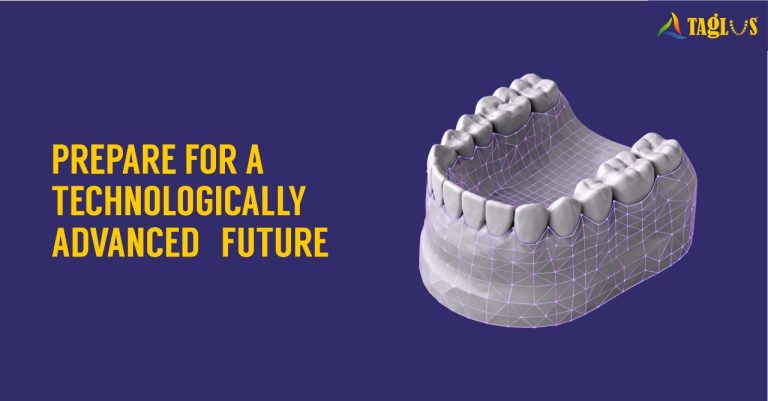
Just like the dental industry, the thermoforming technology is evolving rapidly. It is essential to recognize that remaining competitive in this dynamic environment requires a willingness to embrace innovation. Upcoming developments in the dental thermoforming industry will be significantly shaped by emerging trends like artificial Intelligence (AI), enhanced tools, and optimized workflows. By capitalizing on future trends in dental thermoforming and incorporating these technologies, your practice or lab can remain at the forefront and continue to satisfy the increasing needs of patients.
Let’s delve deeper into some of the primary trends, the challenges that lie ahead, and how you can prepare for a more technologically advanced and efficient future.
AI-Enhanced Precision in Thermoforming
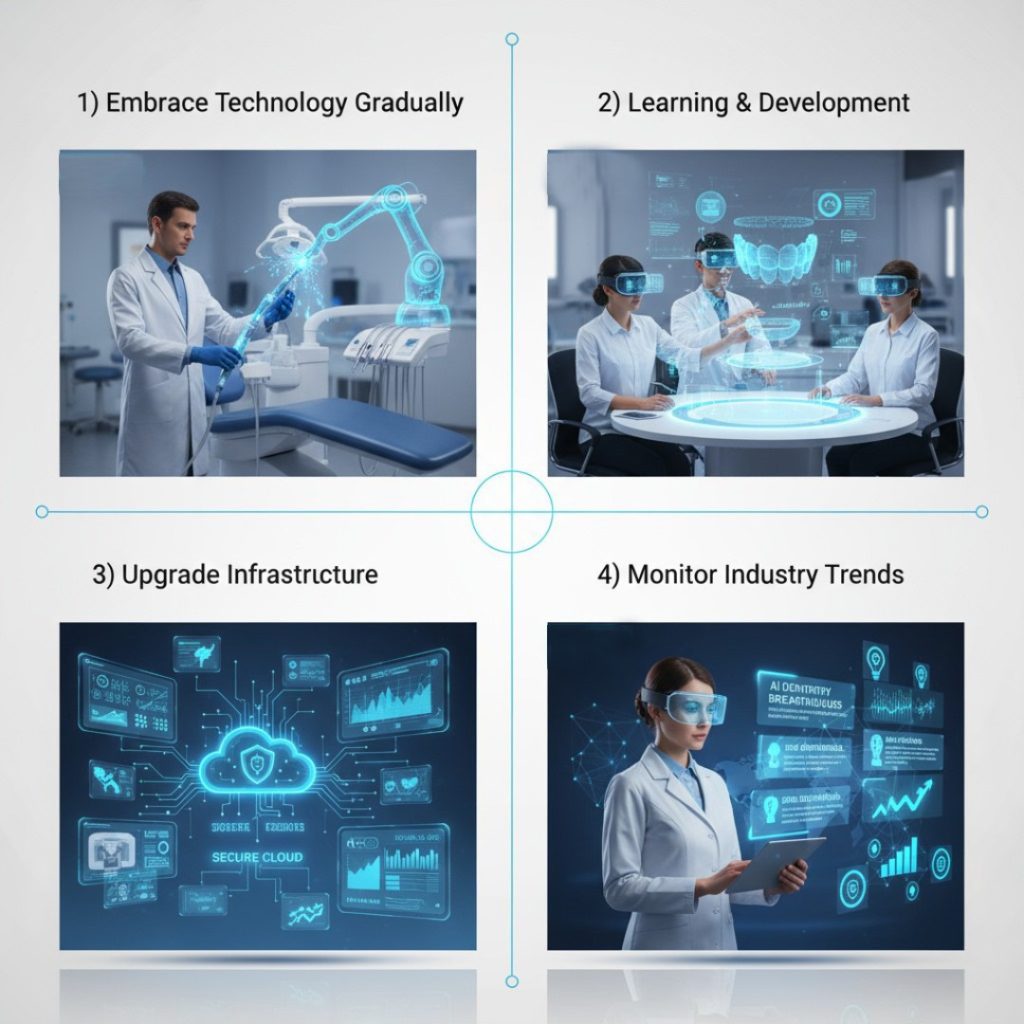
Artificial Intelligence (AI) is the capability of machines and software to analyze extensive volumes of data, discern patterns, and make decisions or forecasts with considerable accuracy. In contrast to traditional systems that operate on pre-set instructions, AI learns from data and evolves over time.
In the field of dentistry, AI is already making an impact, and it is all set to revolutionize thermoforming technology. From diagnosis through treatment planning to appliance production, AI can enhance precision, minimize mistakes, and establish more efficient workflows.
How AI Will Revolutionize Thermoforming Technology?
Improved Accuracy
AI-driven systems can interpret intricate scans and 3D models with exceptional precision, suggesting how aligners or dental devices will fit a patient. This minimizes manufacturing errors, ensuring enhanced comfort and functionality for patients.
Enhanced Workflows
AI tools can streamline processes like treatment planning and machine operation. By evaluating patient data, these systems decrease manual workload and accelerate production schedules.
Predictive Maintenance
Cutting-edge thermoforming equipment fitted with AI can assess their own performance. They can effectively assist an operator in maintaining the machinery through an alert or notification system. This capability helps prevent unexpected breakdowns and guarantees a smooth workflow in the lab.
Strategies to Stay Ahead with AI:
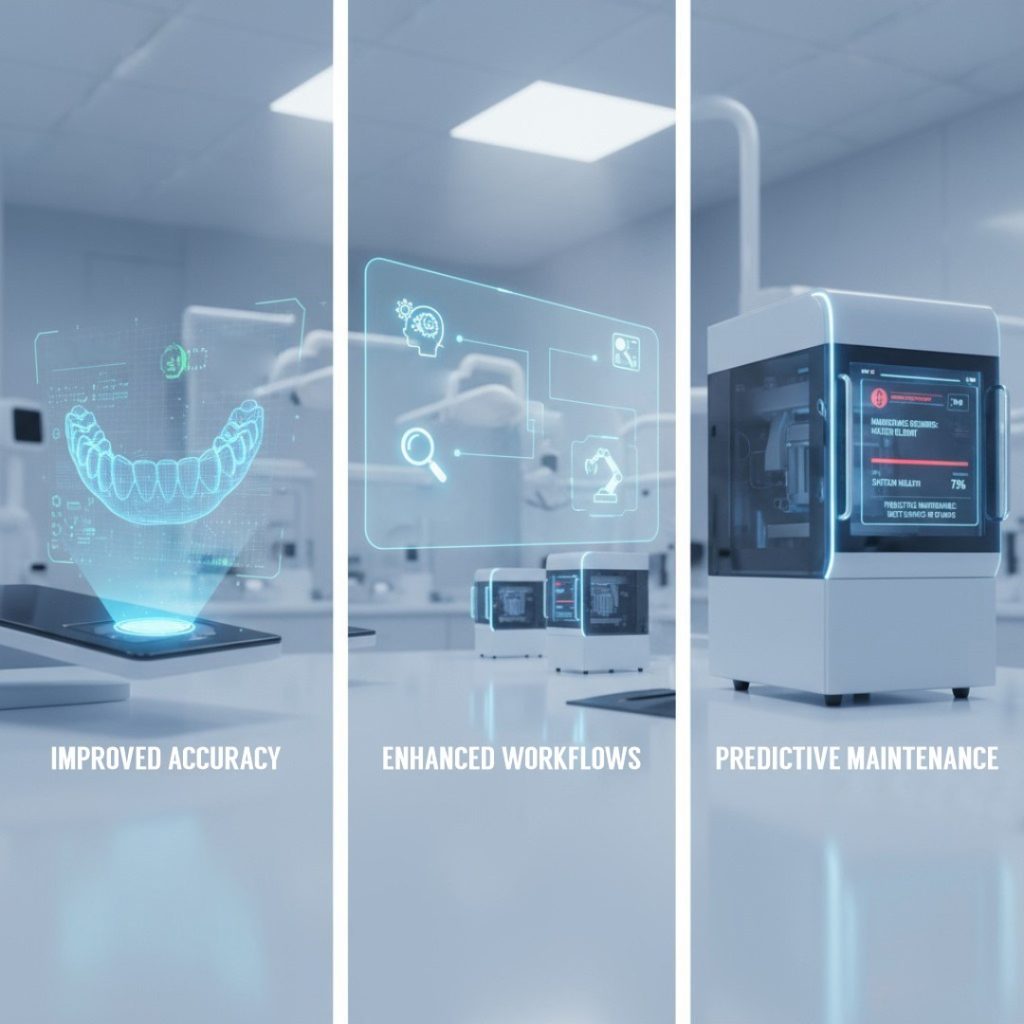
Invest in Machines with AI Integration: Seek thermoforming devices equipped with AI features, such as self-adjusting capabilities and predictive maintenance functionalities.
Educate Your Staff: Provide your team with the skills and knowledge to utilize AI-driven tools proficiently.
Investigate Digital Treatment Planning: Incorporate advanced software that merges AI with digital models for accurate aligner or appliance design.
AI in Orthodontics1:
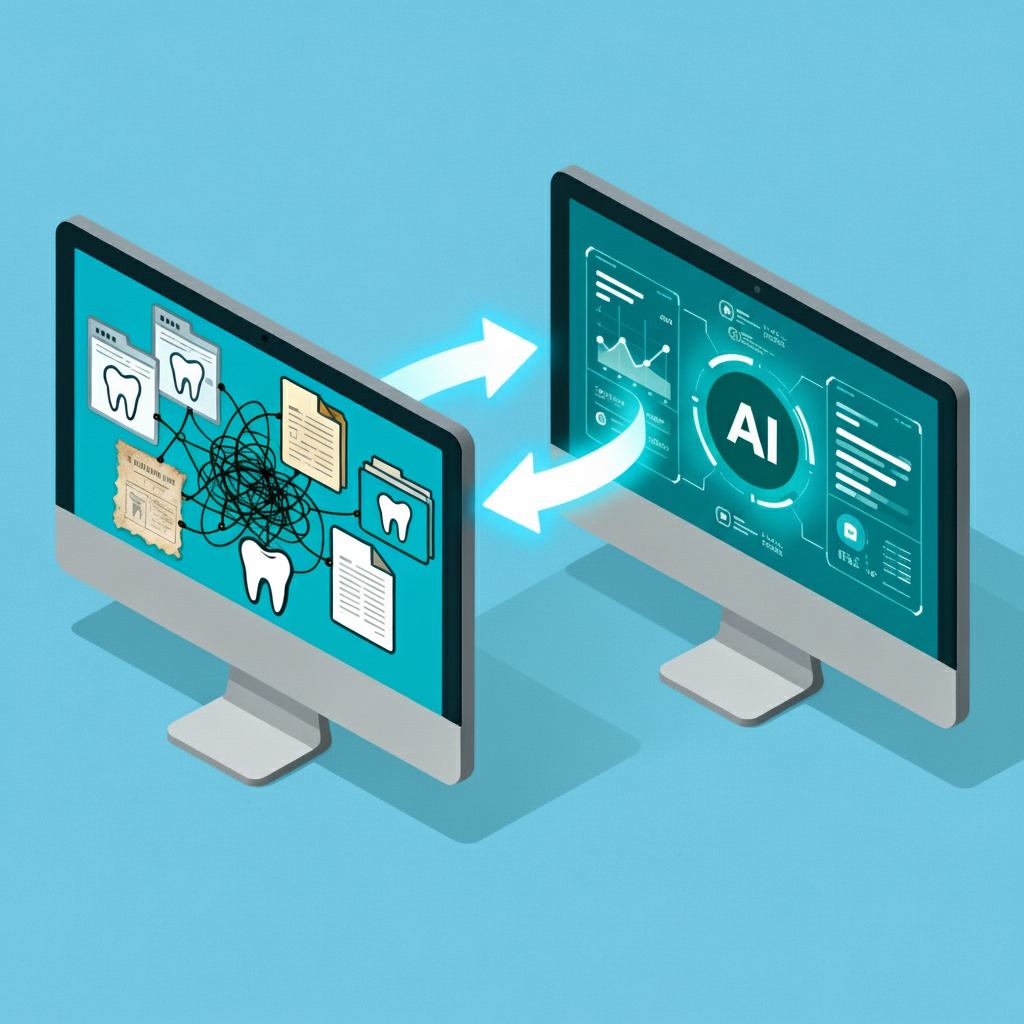
AI’s use extends beyond thermoforming and encompasses other areas of orthodontics:
1 – For Diagnosis
AI can swiftly and accurately evaluate X-rays, cephalometric images, and various diagnostic resources.
It has the capability to detect dental problems, predict facial growth trends and even identify airway blockages at an early stage.
2 – For Treatment Planning
AI assists clinicians in making informed decisions based on data, such as assessing the necessity for tooth removals or surgical interventions.
It can model treatment outcomes, providing dentists and patients with a clearer understanding of what to anticipate.
3 – For Clinical Operations
AI can aid in monitoring patients remotely, lessening the need for continual in-office appointments.
It simplifies administrative functions, such as clinical documentation, by automating data entry and analysis.
Challenges of Implementing AI in Dentistry:
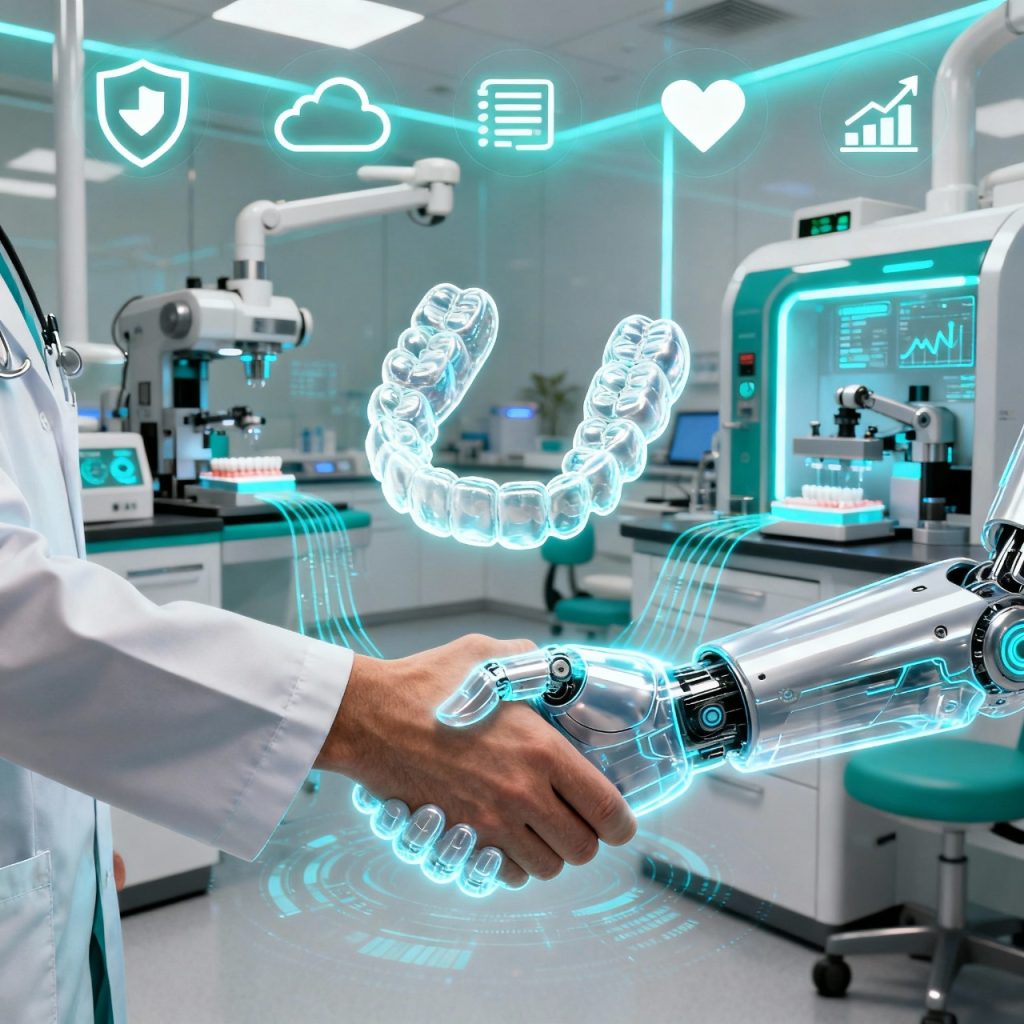
Although AI brings significant advantages, it also introduces several obstacles that must be tackled:
1 – Ethical and Privacy Issues
Protecting patient information is essential. AI systems need to adhere to stringent privacy regulations to maintain patient confidence.
Tackling biases in AI algorithms and ensuring comprehensive training for healthcare providers are also vital for ethical implementation.1
2 – Data Integration Challenges
Numerous dental records are kept in old or disjointed systems, complicating the effective use of AI tools. 2 Upgrading to modern, centralized data management systems is essential.
3 – Limited Human Insight
AI is capable of efficiently analyzing data but doesn’t possess an understanding of the psychological and emotional facets of patient care. Unlike experienced clinicians, AI systems may have difficulty considering the psychological and emotional dimensions of a patient’s background and the specific complexities of individual cases when crafting a treatment plan.3 Dentists need to harmonize AI insights with a human-centred method.
Preparing for the Future:
Embrace Technology Gradually
Begin by integrating AI-powered tools that enhance your existing workflow. A phased approach to adoption facilitates a smoother transition for your team.
Invest in Learning and Development
Offer continuous training to ensure your staff is comfortable with new technologies and recognizes their potential.
Upgrade Your Infrastructure
Adopt modern data storage and management solutions to fully leverage AI technology.
Monitor Industry Trends
Stay informed about developments in dental technology to pinpoint and capitalize on opportunities promptly.
For your thermoforming workflow, explore the range of innovative products by Taglus. The state-of-the-art solutions by Taglus ensure that you stay ahead in this competitive world and provide superior care to your patients.
Conclusion:
Dentistry is evolving quickly, and thermoforming technology is no exception. AI is poised to play a crucial role by enhancing precision, optimizing workflows, and enabling predictive maintenance. However, challenges such as data integration, ethical issues, and the necessity of a personal touch must be managed carefully.
By investing in the appropriate tools and education while keeping a patient-focused approach, dental practitioners can fully unlock the potential of AI. This will not only improve patient care but also provide a competitive advantage in the sector, positioning your practice or laboratory for sustained success.
References:
1. Verma SK, Aiswareya. G, Bais DRS, Yadav PK. Impact of technology on orthodontic practice. J Dent Spec 2024;12(1):25-31.
2. Babu A, Onesimu JA, Sagayam KM. Artificial Intelligence in dentistry: Concepts, Applications and Research Challenges. E3S Web of Conferences. 2021;297:01074. doi:https://doi.org/10.1051/e3sconf/202129701074.
3. Rahim A, Khatoon R, Khan TA, et al. Artificial intelligence-powered dentistry: Probing the potential, challenges, and ethicality of artificial Intelligence in dentistry. Digit Health. 2024;10:20552076241291345. Published 2024 Nov 11. doi:10.1177/20552076241291345.
Know More About Us
SignUp To Our Newsletter And Get To Know More About Taglus
Copyrights@taglus-2025
*Taglus is a trademark of Vedia Solutions










Leave a Reply